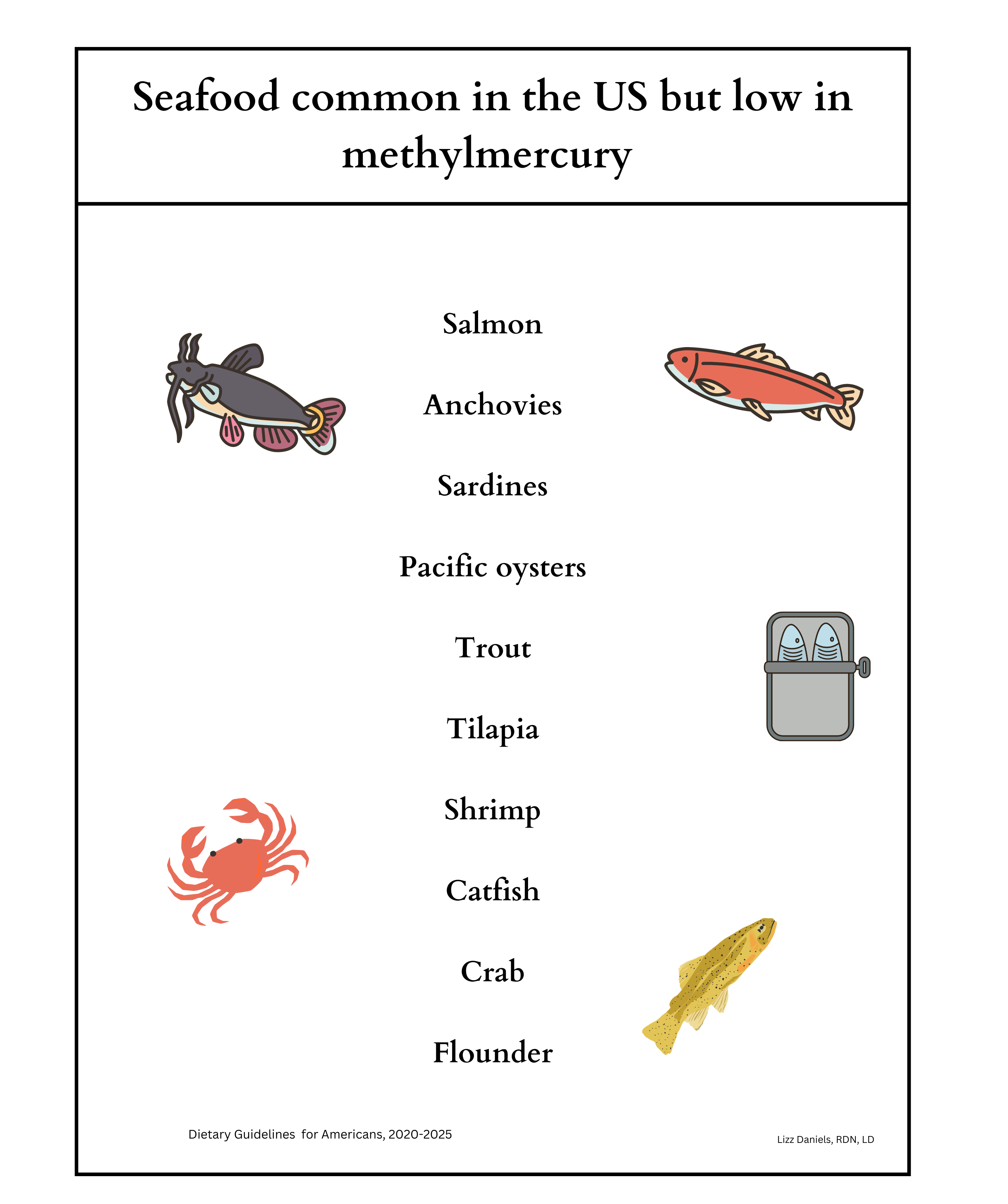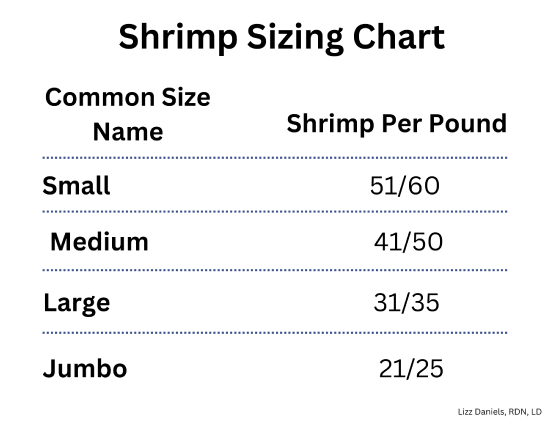2.3.3: Fish and Cooking Methods
- Page ID
- 64455
Finfish Selection:
The poke and sniff method was an actual technique that meat inspectors used to use to inspect meats and prevent dangerous meats that had undergone spoilage from entering the main food supply. Before we knew more about microorganisms and foodborne illness meat inspectors would literally poke, prod, and sniff meat and poultry as their final inspection method. That system, as we know, was wildly flawed and has since been discontinued but when it comes to inspection of fish to ensure freshness this old timey method is a reasonable way for the average consumer to assess the freshness of seafood at the time of purchase.
For whole fish, look for fish that is still shiny and bright and have eyes that have not dulled or sunken in. Fish, that smells overly "fishy" has begun the decomposition process and is no longer fresh. Fish should not appear bloated and the body should feel somewhat stiff and firm. Fresh fish markets, often keep live fish inside large water tanks to ensure peak freshness at the time of purchase, while others will keep fish "on ice". While keeping fish frozen or chilled can slow down the process of decomposition it is not as protective against the unsaturated fats becoming rancid and therefore, is not a sure thing in ensuring freshness. Best judgement should be used in the purchasing of seafood.
.png?revision=1)
Rigor Mortis:
When selecting fish, a stiff body is a particularly important characteristic to look for because this is a good indication that the fish is still in rigor mortis. Rigor mortis occurs quickly after death but lasts a shorter period of time than the rigor mortis process explained previously in the meat section. The timeline of this process varies greatly however on size and species of fish. This natural process of muscles stiffening and then relaxing increases the water holding capacity of the muscle proteins which translates to a juicier, more tender fish with better flavor.
Maintaining a colder temperature can prolong this process however due to the unsaturated fats found in fish rancidity can still occur. Rancid fats have a distinct aroma, which is another reason to do your due diligence in assessing the freshness of fish.
Cuts of Fish:
Before a fish makes its way to your plate, it is first prepared. There are cuts of finfish that are outlined below with their best cooking methods or uses.
.png?revision=1)
Methylmercury Concerns:
 While it has been a standard recommendation per the Dietary Guidelines for Americans, a document published every 5 years to guide the nutrition goals for Americans, to consume 2 servings of fatty fish per week there have been concerns about methylmercury concentration in fish and the dangers that may pose to human health.
While it has been a standard recommendation per the Dietary Guidelines for Americans, a document published every 5 years to guide the nutrition goals for Americans, to consume 2 servings of fatty fish per week there have been concerns about methylmercury concentration in fish and the dangers that may pose to human health.
Methylmercury, often referred to as simply mercury, is an organic compound that is a byproduct of the coal burning industry. When coal is burned, the naturally present mercury in that coal is released into the atmosphere where it is eventually returned to the earth by rain or snowfall. Bacteria convert the element of mercury into the organic compound known as methylmercury which bioaccumulate and biomagnify in the animals that live within waterways and oceans.
For that reason, smaller fish tend to be safer to consume while larger fish, who have consumed the smaller fish as apart of their own diets, will have higher concentrations of methylmercury.
Methylmercury is known as a neurotoxin and can cause impaired neurological development which is why it is of particular interest for those who are pregnant to avoid excessive sources of it.
According to the Dietary Guidelines for Americans, most of the U.S. population is not consuming the recommended amount of seafood and so their potential for risk is low. However, fish is a good source of omega 3's which is known to have antiinflammatory properties and emerging evidence suggests that it can work together with other factors to delay the onset of Alzheimers Disease among other neurodegenerative disorders. Due to the health benefits associated with regular consumption of seafood, it is recommended to choose low-methylmercury fish sources.
Heated (Dry and Moist) Methods:
When cooking shellfish, it is believed that the "well done" rule should be observed, however with clams and oysters cooking actually destroys their flavor and they are often consumed raw for this reason. Foodborne illness is still a threat in this case so it is advised that pregnant people or those who are immune compromised not consume these foods.
When thinking about the best cooking method for fin fish, consider the texture of the fish that you are preparing. If it has a firmer texture grilling or other dry heat methods are possible, but if it is a delicate fish that may easily fall apart during these types of heating methods consider a moist method such as en papillote.
To prevent sticking, lean fish should be cooked in plenty of fat. Fatty fish do not often make for good deep fried fish due to the risk of their natural oils breaking down in the process and creating unpleasant smells and flavors.
High heat for a shorter cooking period is often permitted when using dry heat methods due to the quick cooking time of the muscle fibers found in fish and the quick breakdown of the collagen that holds them together. Cooking at lower temperatures for a longer period of time often results in over-cooked outside and raw inside. It is again for that reason that cooking from frozen is not recommended and fish that has been frozen should be thawed to avoid frozen centers and overcooked outsides.
Review cooking methods discussed previously and see how they may relate to cooking a delicate food such as fish.
Raw Fish:
Raw fish is commonly consumed and has grown in popularity with the introduction of sushi in the U.S. over the last 20 years. Seafood that is sold for the purposes of being sold for uncooked consumption undergoes careful handling and inspections to ensure the safest product possible. Raw fish warnings exist for pregnant people and immune compromised individuals.
Shellfish Selection:
Shellfish are highly perishable and are sold frequently alive and still in their shells. To maintain quality they must be kept alive until they are cooked. Some shellfish are consumed raw, such as oysters, however- consuming raw shellfish poses the risk of foodborne illness.
Since shellfish are sold while still alive, it is typically easy to assess activity. However, some shellfish are more tricky to due to the tightness of their shells or decreased activity level of the species. In the case of mollusks, if the shell is left open (without movement) than the mollusk is most likely dead and should be discarded. This same rule does not apply to mussels or clams that normally have slight gaps in their shells. Looking for signs of damage or decay as well as evoking the "poke and sniff" method of odor may be helpful.
Scallops are a type of mollusk where the only part that is consumed is the creamy white abductor muscle that is responsible for the movement of the shell. These shells are unable to close tightly and so to prevent early spoilage they are immediately shucked and either sold fresh, frozen, or in a can.
Other shellfish such as oysters are not always sold alive but may be already shucked (removed from shell) and then chilled or frozen. Live oysters will have tightly closed shells so discard any that are gaping open or have defects. Shucked oysters should look and feel plump. Clams are sold and bought in the same forms as oysters and their shells should not indicate opening or defects. Clams come in two variety, soft or hard shell. These distinctions are misleading because the shells of soft shell clams are not in fact soft but thin and brittle. Soft shell clams should be eaten within the day of purchase. 
The largest of all the crustaceans, lobsters are considered a delicacy with preference towards consuming females. Most of the meat of the lobster is found in the large tail but the most sweet and tender portion of meat is found within the small claw. Lobsters are sold alive or may be frozen or canned. When cooked lobsters turn from a blue-grey color to a distinctive red-orange.
Shrimp are sold raw with shell on or may have their shell removed and frozen. Shrimp must be deveined which is the removal of a dark "sand vein" that runs the length of the shrimps back. The sand vein also known as the alimentary canal is where bodily wastes, including sand, pass through the shrimp which is why it should be removed. In tiny shrimp this line is nearly undetectable and therefore does not need to be removed.
Shrimp are sold according to size and how many shrimp weigh a pound.
Determining Doneness
Unlike most meats and poultry, nearly all fish and shellfish are inherently tender and should be cooked just until done. Indeed, overcooking is the most common mistake made when preparing fish and shellfish. Variables such as the type and the form of fish and the exact cooking method used suggest that one or more of the following methods of determining doneness are more appropriate for determining doneness:
- Translucent flesh becomes opaque - The raw flesh of most fish and shellfish appears somewhat translucent. As the proteins coagulate during cooking, the flesh becomes opaque.
- Flesh becomes firm - The flesh of most fish and shellfish firms as it cooks. Doneness can be tested by judging the resistance of the flesh when pressed with a finger. Raw or undercooked fish or shellfish will be mushy and soft. As it cooks, the flesh offers more resistance and springs back quickly.
- Flesh separates from the bones easily - The flesh of raw fish remains firmly attached to the bones. As the fish cooks, the flesh and bones separate easily.
- Flesh begins to flake - Fish flesh consists of short muscle fibers separated by thin connective tissue. As the fish cooks, the connective tissue breaks down and the groups of muscle fibers begin to flake, that is, separate from one another. Fish is done when the flesh begins to flake. If the flesh flakes easily, the fish will be overdone and dry.
Remember, fish and shellfish are subject to carryover cooking. Because they cook quickly and at low temperatures, it is better to undercook fish and shell- fish and allow carryover cooking or residual heat to finish the cooking process.
Sources:
https://www.pbs.org/wgbh/pages/front...0food%20supply.
https://www.who.int/news-room/fact-s...0as%20foetuses.
https://www.dietaryguidelines.gov/si...-2020-2025.pdf



.jpg?revision=1&size=bestfit&width=890&height=501)